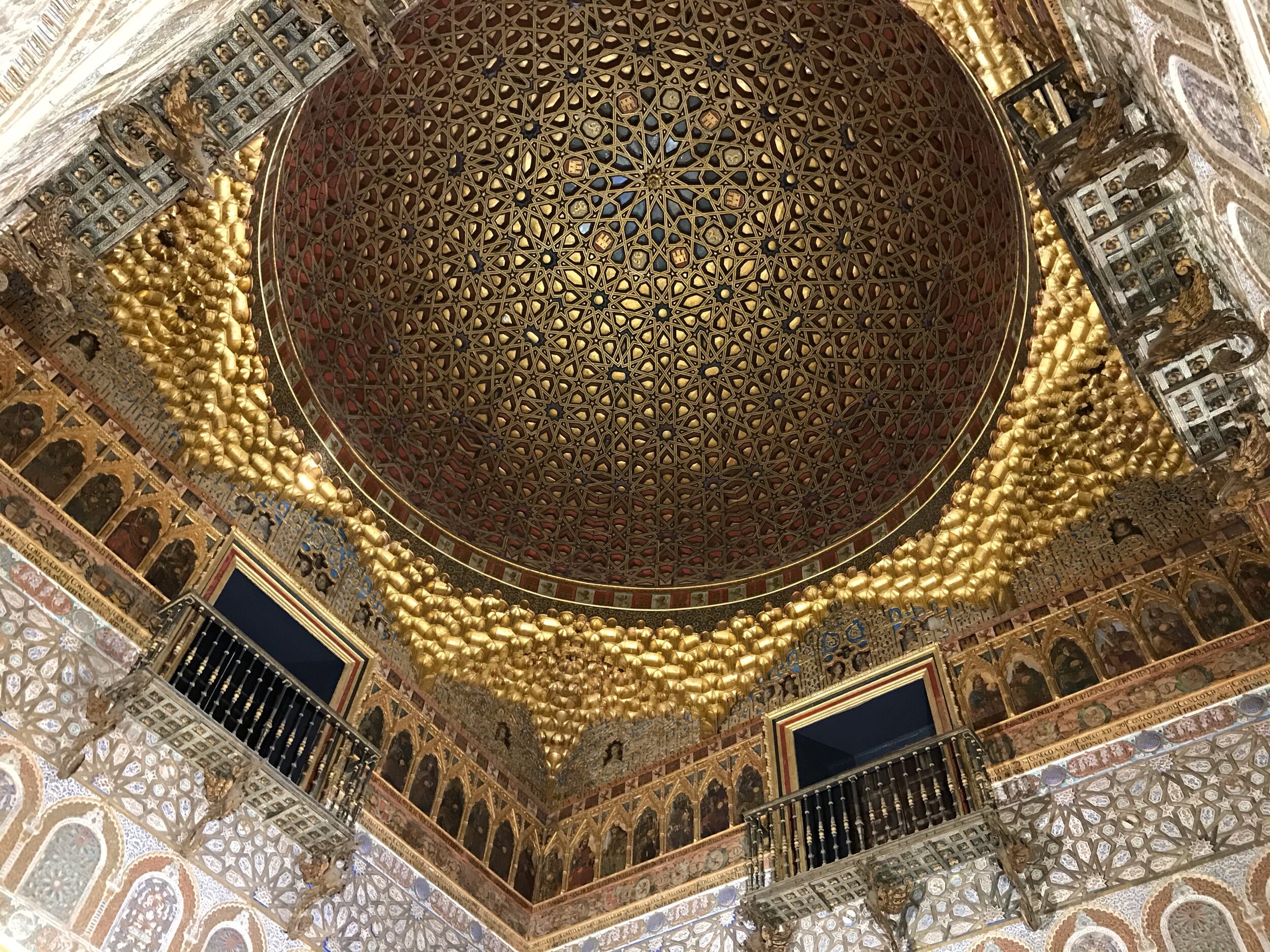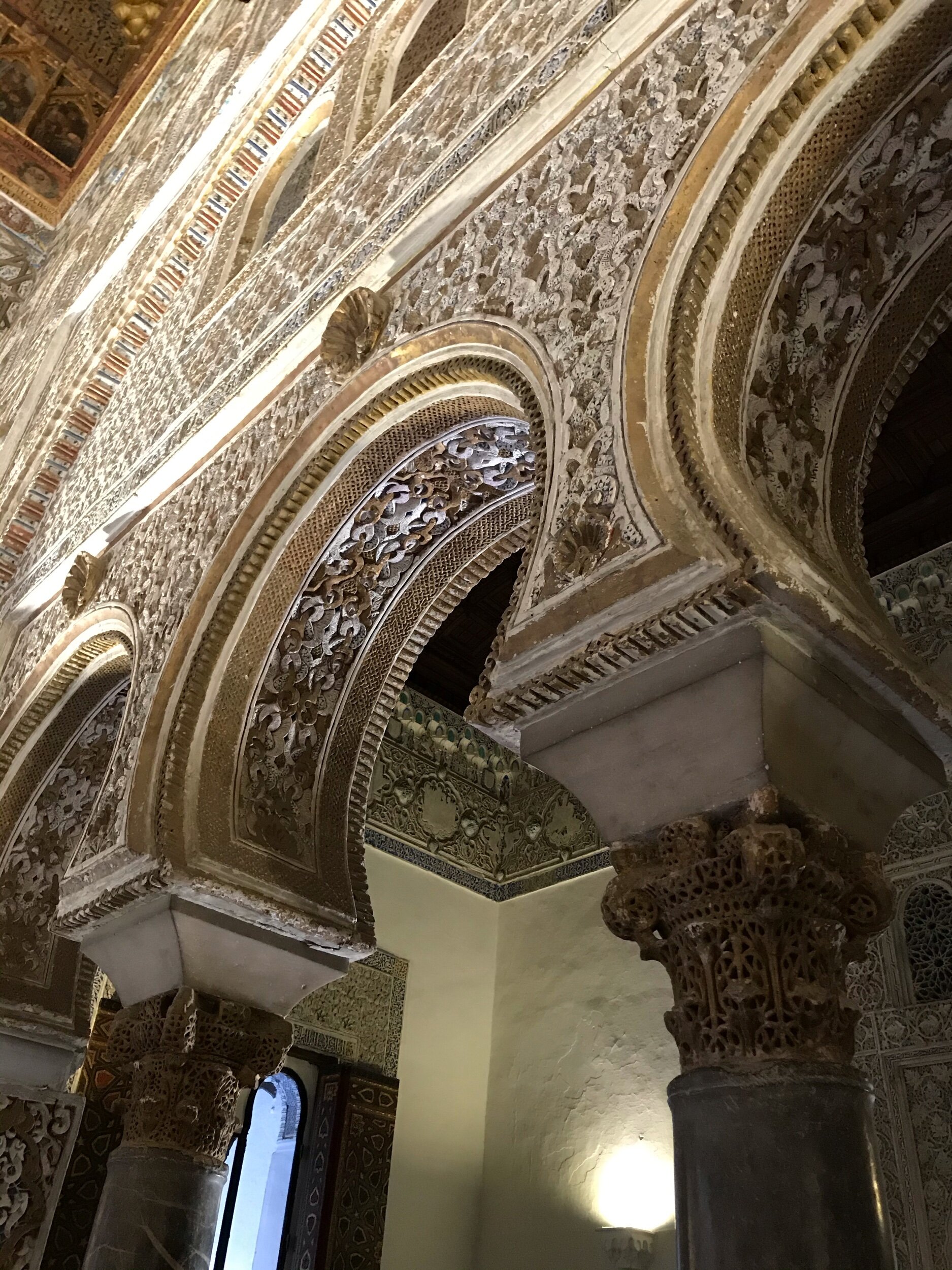1. Southern Spain is a cultural swirl.
When we first landed in Seville, Sean went on and on and on about how similar it looked to Texas. As soon as we walked into the Real Alcázar, however, I was convinced we were back in Marrakech. (Look at this slideshow of the Alcázar in Seville and the Bahia Palace in Marrakech and tell me they aren’t the same place.)







Neighboring Granada was the last Moorish holdout in Spain during the Christian Reconquista. Today, 6% of the population is Muslim—twice as high as the national average. We went to a Moroccan restaurant for dinner and the food and decor were so on point that when we stepped out into Granada’s narrow streets afterward, I thought we were in a medina.
Lemon and chicken tagine just like we had in Morocco
But then we’d turn a corner and BOOM—it was South America. I spent an afternoon in Granada writing our Machu Picchu story, and when we left the Airbnb later I had to be reminded that we weren’t actually in Peru.
This could be in South America, but it’s actually a bullring in Seville
Confused? Don’t worry, so was I most of the time.
2. Mealtimes are loco.
You’ve heard the rumors, no doubt, that Spaniards eat at the oddest times. Lunch lasts from around 2 until 4:30, and dinner doesn’t start until 8:30 or 9. Even though Sean and I knew what we were getting into, it still threw us for a loop. We showed up at 3:30 for “late lunch” twice in Madrid expecting empty restaurants, and both times we had to wait in half-hour long lines.
The lunch rush at the most Spanish of restaurants
We were handed a lunch menu at 6:30 in Barcelona. When the Moroccan restaurant in Granada opened at 7:30, we were beating down the door along with two other groups of hungry Americans. When we got back to our Airbnb at 10, our Spanish host was just sitting down to eat. “The only people worse than us are the Argentines,” he said.
The oldest tapas restaurant in Seville
3. The albondigas of my youth.
I studied abroad in Spain when I was in high school, and one of the things I remember most vividly are the albondigas (meatballs) my host mother made. She served them in a thick, brown gravy rather than a tomato- or pepper-based sauce. I’d never had anything like them before, and I hadn’t been able to find anything similar in the 16 years since. But lo! They turned up again in Madrid! And they were just as delicious as I remembered.
Albondigas, 2003-style
4. Practical Spanish slang.
Sean and I went to a showing of The Big Lebowski on Thanksgiving, and it turns out that watching an English movie with Spanish subtitles is a great way to hone your foreign language skills. For example: “tío!” means “man!”; “dude” does not translate; and there’s more than one way to say the F-word in Spanish (it can either be the J-word, the P-word, or the C-word, depending on context). With all this new terminology in my vocab, who cares that I couldn’t remember how to ask for a fork?
A fine old place to watch an American movie on Thanksgiving
5. Barcelona saves the day.
I’m going to be honest: We struggled with Spain at first. The destinations weren’t the problem—Granada is gorgeous and Seville is packed with culture and activities.
Alhambra and the Sierra Nevadas, Granada, Spain
Plaza de España, Seville, Spain
There were just a lot of little hiccups (a subpar Airbnb; two disappointing guided tours; the rudest waiter on Earth) that distracted from the good stuff. We were counting on Barcelona to go off with out a hitch, and that made us very nervous.
Casa Batlló, Barcelona, Spain
Barcelona has become a poster child for overtourism in recent years, and we know better than to get our hopes up about extremely popular destinations. But we’d been eagerly anticipating Barcelona for years in spite of ourselves, and now we needed it to make up for all the other missteps. Needless to say, it was a lot of pressure for one city. But Barcelona rose to the occasion—and then she totally stuck the landing.
Barcelona from la Sagrada Família
The city is modern and laid-back and beautiful. We breathed a sigh of relief when we entered our homey and historic guesthouse. And everyone in Barcelona—from waiters and museum staff to bus drivers and shop owners—was so welcoming that I finally dusted off my ten-year-old Spanish skills and confidently conducted a number of transactions without using a word of English. (Buying Cuban cigars for my dad in Spanish is a lifetime achievement.) And then, of course, there was the cherry on top…
La Sagrada Família, Barcelona, Spain
6. La Sagrada Família.
Sean and I are not great connoisseurs of art. We skipped a few major museums throughout Europe, and we don’t feel the tiniest bit of regret. But Spanish art has a special appeal.
Mae West room at the Dalí Museum
Picasso, Dalí, Miró, and their ilk had a totally unique way of seeing the world, and we’re absolutely fascinated by it. (We even went two hours out of our way to see Dalí’s self-made shrine in his hometown.) But the greatest Spanish visionary of all is, for my money, Antoni Gaudí.
The chimneys at Casa Milà, Barcelona, Spain
It is all-caps EXPENSIVE to tour his numerous contributions to Barcelona. And while we happily blew our daily budget on Casa Milà and woke up at the crack of dawn to tour Parc Güell before the ticket takers arrived to charge us, it wasn’t technically necessary.
Parc Güell, Barcelona, Spain
Because Gaudí’s crowning glory—and the one project of his that is not to be missed—is la Sagrada Família. The details on the facades, the forest-like tangle of columns inside, the way the light splashes in through the stained glass windows—it’s one of the most awe-inspiring places I’ve ever seen.
Sagrada Família, Barcelona, Spain
Who cares that it’s perpetually covered in scaffolding and perhaps not the best use of funds? Architecturally, it’s a triumph.
La Sagrada Família, Barcelona, Spain



What’s the first thing you think of when I say Colombia? Cocaine? Pablo Escobar? Narcos? FARC? Terrorism? That’s fair. But what if I told you everything you thought you knew about the country is wrong?